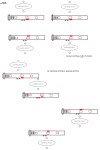Let us look at this?
Most of these statements are true. There are caveats.
1. HIJMS Soryu had been in as many aircraft carrier duels as USS Wasp before she was SUNK. Exactly 0.
2.
Her air group had carried out 3 harbor raids. Pearl Harbor, Darwin and Colombo. Her air group had supported IJA operations in China and Indochina.
3. USS Wasp's history was dissimilar, but as can be attested, the
USS Wasp had her own war experienced air wing.
4. Compartmentation is a coin toss. I think the Wasp was the tougher ship, but then HIJMS Soryu was a three torpedo (1 of the three missed) scuttle after she burned down and was ruined. It took SIX torpedoes, three Japanese and three American fish to scuttle the USS Wasp.
These statements are very debatable. We do not know how Soryu's air wing would have fared in direct battle with the USNAS. Her fliers never got the chance. We have some idea how USS Wasp's pilots would have fared in their operations against Japanese aviation in the operations leading up to her loss. Good.
Japanese AAA aboard HIJMS Soryu was lousy. From Wiki.
USS Wasp also from Wiki
Also, based on the copious research John Lundstrom (The First Team ) did on Pacific War naval aviation operations from 7 December 1941 to 12 June 1942, I am convinced that USN fighter pilots flying decidedly inferior fighter aircraft to the Japanese IJNAS provided better fleet defense than either the Japanese fighter pilots or the British Fleet Air Arm could have in that same period.
Inexperienced FDOs are present, it is true, but I see nothing in the literature that indicates the British would or could do better than the PACFLT. Actually, documentation from British air operations during that period indicates to me, that the British would have done worse and did do worse against the attacking Japanese than the Americans did. Proof? Indian Ocean Raid vs Coral Sea and Midway.
Extremely interesting read: Krishima damage analysis ...
Note center hit, especially to machinery spaces. Also note the hits fore and aft?
One cannot exclude bodyguard ships in an aircraft carrier fight; unless one is D'orly Hughes, i.e. a card carrying clown club member of the "we don't need no stinking CAP, or need to know how aircraft carriers work fraternity." Sort of a co-member with Leigh Noyes.
Not the way the USNAS fought at all. They, in fleet defense, tended to orbit in CAPS, fighters on top to handle dive and level bombers and scout bombers at low altitude to deal with enemy torpedo planes until FDOs radio vectored them onto radar contacts. Noise discipline was maintained and flight sections were ground control intercept directed by four flights and COLOR CODES so who knew where to go and what to do when they got there. As for scouting, the VBs were not outranged at all. The Japanese did not use their carrier aviation to search. That was their cruiser float planes and those were shorter ranged functionally than the VBs.
This of course is not what happened either at Coral Sea, Midway or Eastern Solomons. Now the Enterprise FDO did screw up at Santa Cruz.
The idea that Wasp takes two and two out of 36 planes is sheer nonsense. 39 planes only scored 2 torpedoes and a bomb on USS Lexington and that humongous garbage scow of a ship turned like a PIG. USS Wasp was far more agile and had to be torpedoed from less than 700 meters to get hits.
BTW the USS Yorktown took a lot to kill. NINE torpedoes, four of them American to scuttle.
The Soryo doesn't have that many planes. This scenario is mathematically not realistic.
Case not proven.


/cloudfront-us-east-1.images.arcpublishing.com/expressandstar.mna/EYMLSJZZ7ZHY7A7GJRVA7TNGFA.jpg)



